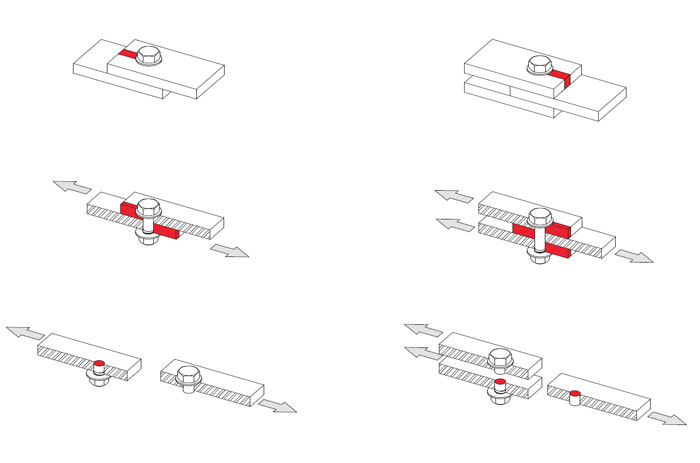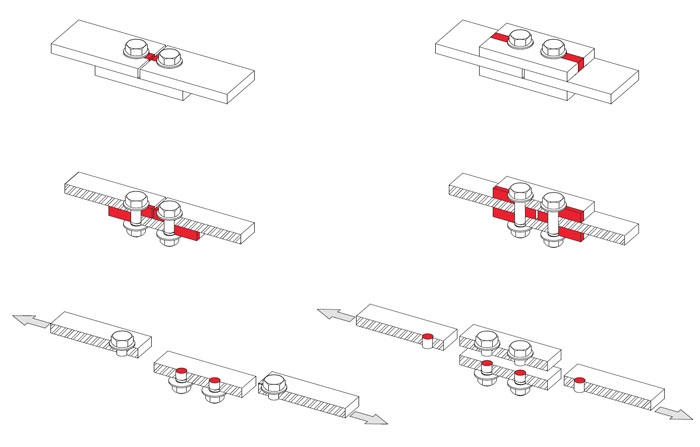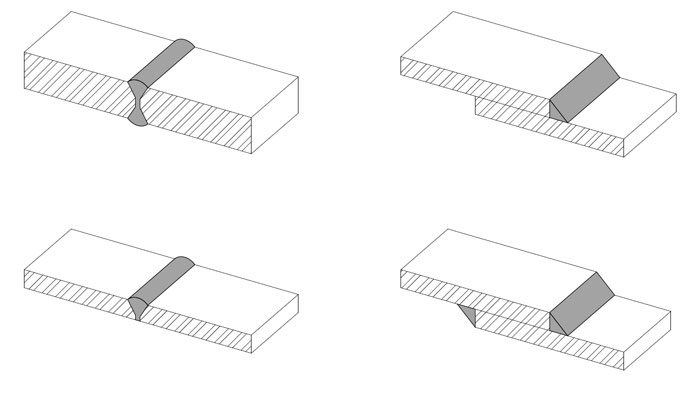Basic Connections
Connection Choices
Connecting Steel to Steel. All steel is joined in fairly basic ways. On one hand we may need to splice the members themselves. On the other hand we may need to connect one member to another through a more detailed connection that must be designed to transfer different types of loads.
Splicing Steel. Steel is spliced in situations when the required length of the member either exceeds the transportation length or where there are restrictions at the construction site that also limit the length of the member. When we splice members it can be done with either a lap type joint or a butt type joint. In a lap joint, the primary steel is overlapped and does not align. In a butt joint, the primary steel aligns and splice plates are used on one or both sides of the joint to provide reinforcement, load transfer and a place to physically secure the splice. These splices can be fixed either by bolting or welding, depending on the requirements of the connection. Structurally these joints will normally be used to transfer shear stresses and NOT moment (bending) stresses. So splices are normally either in either tension or compression. The design of the joint will have to resist shear forces which if excessive could either result in the failure of the joint by shearing through the bolts, or pulling through the end of the plate where the bolt hole has made the steel less strong via the removal of material.
 |
Lapped Splices. At the LEFT is a condition of single shear. At the RIGHT a condition of double shear. The line of the primary piece of steel does not align either side of the joint. The greater the force through the connection, the more of the RED area is needed. The number of bolts will be increased so that the cross sectional area is sufficient to resist the SHEAR loads. The holes must be spaced sufficiently to allow for a distribution of the forces and also far enough from the end of the plate to prevent PULL THROUGH. To resist larger loads, thicker steel is used. |
 |
Butted Splices. At the LEFT is a condition of single shear. At the RIGHT a condition of double shear. The line of the primary piece of steel aligns through the joint. The side plates act as secondary support. The greater the force through the connection, the more of the RED area is needed. The number of bolts will be increased so that the cross sectional area is sufficient to resist the SHEAR loads. The holes must be spaced sufficiently to allow for a distribution of the forces and also far enough from the end of the plate to prevent PULL THROUGH. To resist larger loads, thicker steel is used. |
 |
Welded Splices. The left hand splices use groove welds to create butt joints. The right hand splices use fillet welds to create lapped joints. The left hand inline conditions are often reserved for locations where alignment is critical to carrying the force in line and/or where appearance is important. The weld material is an important part of the strength of the connection. Good quality welds should not need much in the way of remedial treatment or grinding, unless used in very high quality AESS applications (AESS 4). Grinding welds adds greatly to the cost of a project and also weakens the connection by removing the weld material. |
